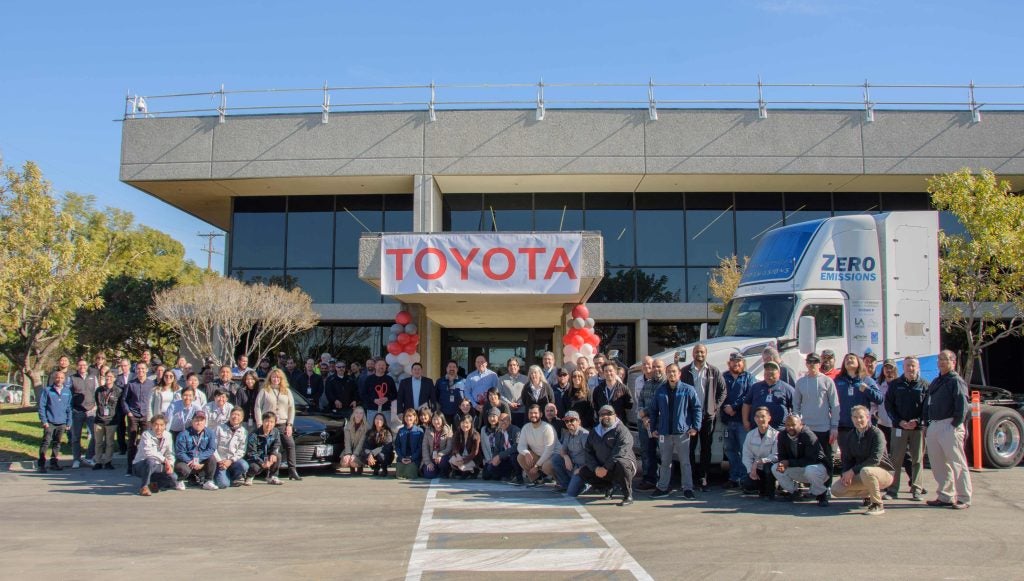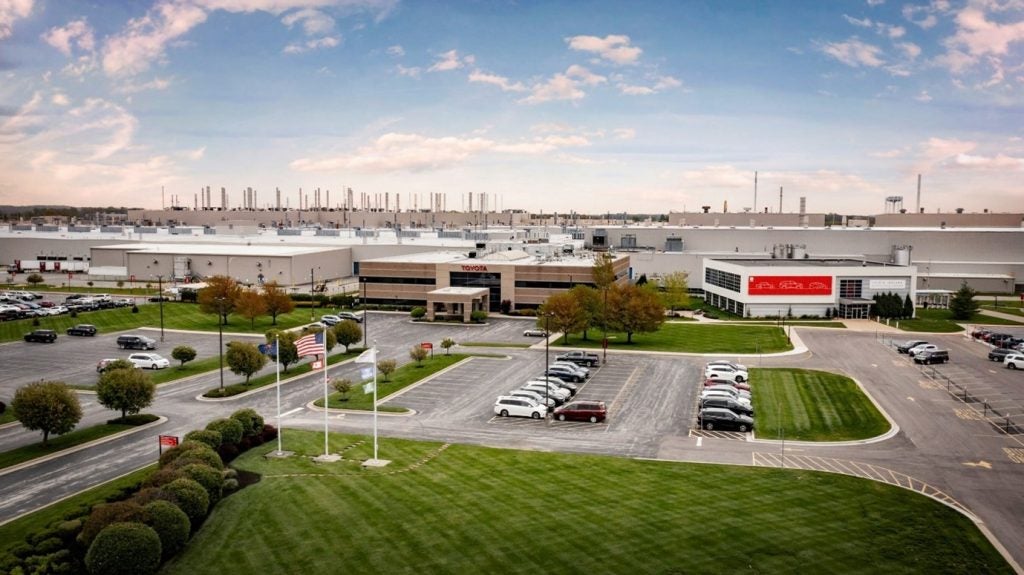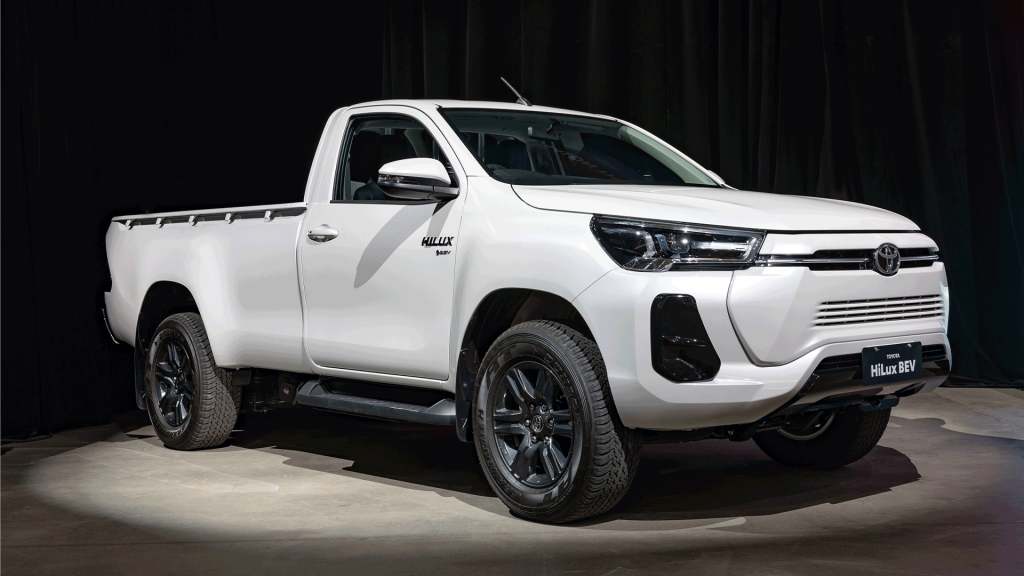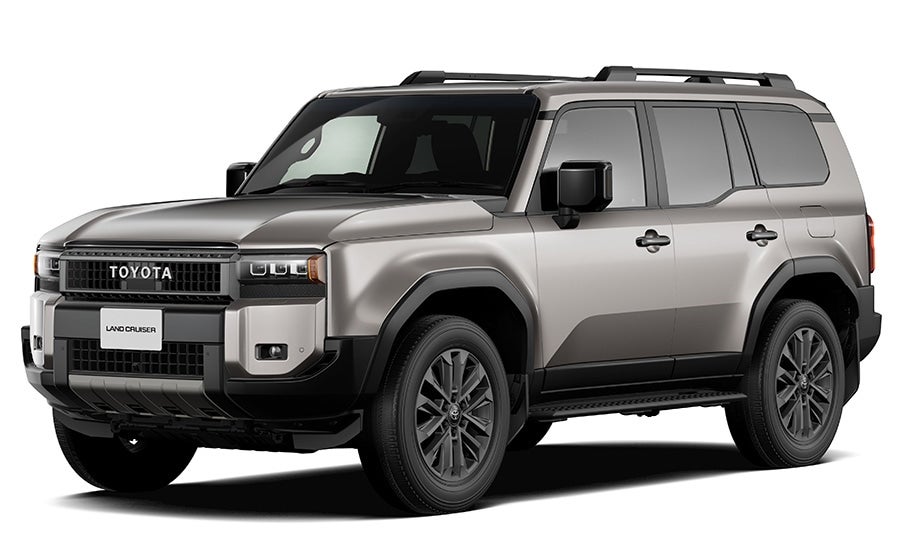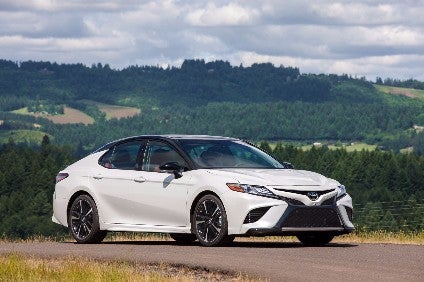
Toyota has completely redesigned the Camry, the best-selling car in America for the past 15 years, on sale in the US late summer. The eighth generation model is built on the TNGA (Toyota New Global Architecture platform and changes include new engines and transmissions. Unlike previous generations, little is carried over to the new model.
With SUVs reducing sedan sales, Toyota designers "aimed for a styling design concept that achieves strong harmony between refinement and a sensual athletic image, creating a new approach to the market. The result is a new signature design language that takes the car into a beautiful and futuristic new direction".
The 2018 model has a sleeker profile than the current model. By lowering the hip points of the occupants (0.8-inches in the front and 1.2-inches at the rear), and therefore their seating positions, the design team was able to reduce the car's overall height by approximately one inch from the current model and incorporate a lower roofline, without sacrificing interior space. This invited the designers to pursue a wind-cutting shape and improve aerodynamics.
US models will be available in five grades: L, LE, XLE, SE and XSE. The sportier SE and XSE grades wear a noticeably different body style than the entry level L and LE, and premium XLE grades, highlighted by a sculpted rocker panel, new 19-inch black machined-finish alloy wheels (standard on XSE and optional on SE), a subtle rear spoiler lip, aggressive front bumper, and rear bumper with a lower diffuser. The face is much more distinctive with large side intakes flanking the lower bumper's unique catamaran-inspired accents, a high and slim upper intake encompassing the central badge, and a gloss black mesh grille. A unique rear bumper with distinctive corner lines and smoke-tinted rear combination lamps highlight the changes at the rear.
Designers sought to make the new Camry sport grades instantly recognisable and appear different from the other models from as far as 200 yards away.
Rigid Body/Platform
The new Camry has a lightweight, high-rigidity body/platform structure with a 30% increase in torsional rigidity.
Despite the increased use of high-tensile-strength sheet metal and hot stamping materials resulting in a lightweight body, further weight reduction has been achieved through the fitment of an aluminium bonnet while new construction techniques have led to the use of thinner body panels for the roof, hood, trunk lid, front and rear doors and front fenders when compared with the previous model.
How well do you really know your competitors?
Access the most comprehensive Company Profiles on the market, powered by GlobalData. Save hours of research. Gain competitive edge.

Thank you!
Your download email will arrive shortly
Not ready to buy yet? Download a free sample
We are confident about the unique quality of our Company Profiles. However, we want you to make the most beneficial decision for your business, so we offer a free sample that you can download by submitting the below form
By GlobalDataLaser screw welding (LSW) has been incorporated at key junctures throughout the body/platform for increased joint rigidity. A special high-rigidity urethane adhesive has been applied to both the windshield and rear window where it meets the vehicle body that helps to realise increased body rigidity. The fortified body includes additional gussets for the front/rear door frame (B-pillar) that have greatly increased the frame/joint strength.
Engineers incorporated a variety of new noise, vibration and harshness (NVH) countermeasures that were previously found exclusively on luxury models. These include sound absorbing/insulation through the fitment of a bonnet insulator and upper and lower fender separator. The passenger compartment is further insulated from the engine and road noise using foam/vibration dampening materials throughout the vehicle along with a thicker dash silencer mat across the entire interior firewall section. Furthermore, a special vibration-damping coating has been applied over a wider area of the underfloor, joined by noise-proofing material encompassing more surface area of the interior's ceiling. Wind noise has been suppressed through a newly-designed rain gutter molding and a reduction in the step at the bottom of the windshield.
New exterior paints will be mated to interior colours in either ash, macadamia or black. A sporty Cockpit Red interior is available on the XSE.
Cockpit
The new car offers information through three available interlinked displays: a 10-inch colour Head-Up Display (HUD); a seven-inch multi-information display within the instrument cluster, and an eight-inch audio/navigation/HVAC (heating, ventilation and air conditioning) control panel seamlessly integrated into the centre console in a modern, flush-surface design.
New engines
Along with the new platform, a new 2.5-litre four-cylinder Dynamic Force Engine, new Direct Shift-8AT eight-speed automatic transmission and a new double wishbone rear suspension design are all available.
Other powertrains are a new 3.5-litre V6, also with the 8AT, and a new hybrid system. The 2.5 develops 206hp at 6,600 rpm (176 at 5,700 rpm in the hybrid configuration) while the V6 is rated at 301 horsepower at 6,600 rpm. All deliver improved fuel economy compared with previous Camry engines.
The new automatic gearbox includes a torque converter that offers a wider range of lock-up (when compared to the previous six-speed) for a more direct driving feel while contributing to improved fuel efficiency through suppressed engine revving.
New allows for the hybrid system's battery pack to be moved from the boot area to beneath the rear seat, positioning the battery weight at a lower centre of gravity axis.
The updated Power Control Unit (PCU) improves the operational efficiency of this powertrain. Thanks to improvements in the conversion efficiency of the PCU and the transaxle/electric motor, they combine to reduce energy loss by a total of approximately 20%. Additionally, improvements to cooling system efficiency has reduced energy loss by about 10%.
The PCU is lighter and more compact as a result of integrating microcontrollers and using a new power stack structure, allowing the unit to be packaged directly above the transaxle. This new design lowers the vehicle's overall centre of mass and allows for a lower bonnet height.
The 2018 Camry Hybrid is equipped with a Lithium-ion (Li-Ion) battery pack on the LE grade and Nickel-Metal Hydride (Ni-MH) battery pack on the SE and XLE.
A new sport drive mode setting has been added and there is a new Auto Glide Control (AGC), which helps to improve fuel efficiency by calculating an efficient coasting logic. When driving normally, engine braking will slow the vehicle down when the driver lifts off from the accelerator pedal. However, to avoid aggressive engine braking, AGC limits the loss of vehicle speed through an automatic drive setting that acts more like a neutral gear, allowing the vehicle to coast to the stop light.
AGC can only be activated when the vehicle is being operated in the ECO drive mode setting.
Safety, connectivity
The Toyota Safety Sense suite of safety systems and technologies will be standard and some models will be offered with Blind Spot Monitor (BSM) with Rear Cross Traffic Alert (RCTA) and optional Intelligent Clearance Sonar (ICS) which also includes a new Rear Cross Traffic Braking (RCTB) system.
The Entune 3.0 system will feature navigation and App Suite Connect for everyone. All Camry four-cylinder and hybrid models will come standard with the Connected Navigation Scout GPS Link with Moving Maps. Camry V6 models will offer the new Dynamic Navigation system, providing improved map accuracy. The wireless map updates provide over-the-air map downloads of recently added roads and point-of-interest not contained in the existing head unit map.
The system also delivers several new technologies including available Remote Connect, which provides remote start and door unlock capability, vehicle status notifications, a guest driver monitor, and vehicle finder. Available Service Connect will provide up-to-date vehicle information on fuel level and maintenance alerts. The system will also offer available in-vehicle Wi-Fi Connect powered by Verizon, allowing up to five mobile devices to connect using 4G LTE.
The 2018 Camry will also offer a JBL premium audio system that features new advancements in sound quality. Sound enhancements include Sound Staging, which positions speakers directly in front of the listener to help emulate a live concert venue; Low Frequency Sounds, made possible by an added 10.1-inch subwoofer; Clari-Fi, a technology that "un-compresses" music to help restore an audio track's dynamic range; and nine speakers that are specifically tuned to the car's cabin dimensions and materials.
In the Trump era, Toyota US emphasises Camry us US-made. For three decades, its American manufacturing home has been Toyota Motor Manufacturing, Kentucky (TMMK) in Georgetown and most Camrys sold in the US are assembled there.
US pricing will range from US$23,495 for the L grade 4-cylinder to $34,950 for the Premium XSE V6. Camry hybrid will range from $27,800 for the LE to $32,250 for the XLE.
The Camry was withdrawn from Europe several generations back as part of a range rationalisation but is still sold in over 100 markets. Toyota Australia, which is ending local manufacture of the model next October, has confirmed it will import the redesigned model, with the same powertrains as the US, for launch in November.



